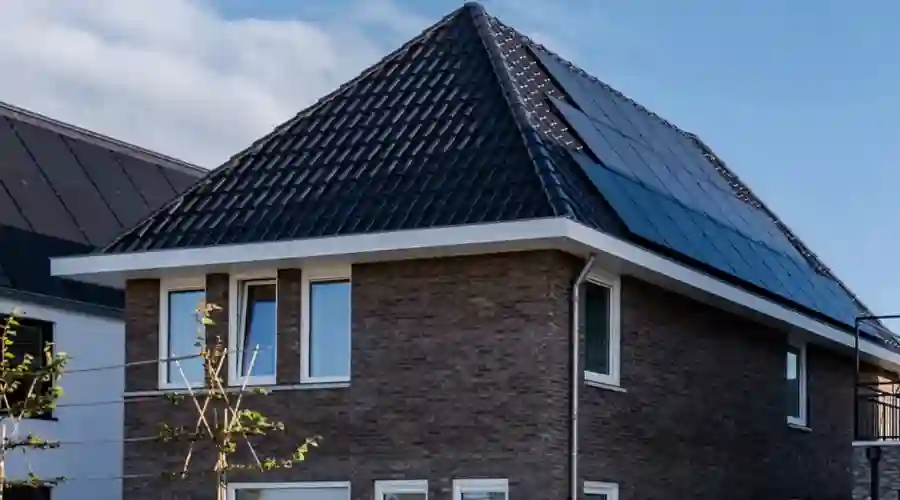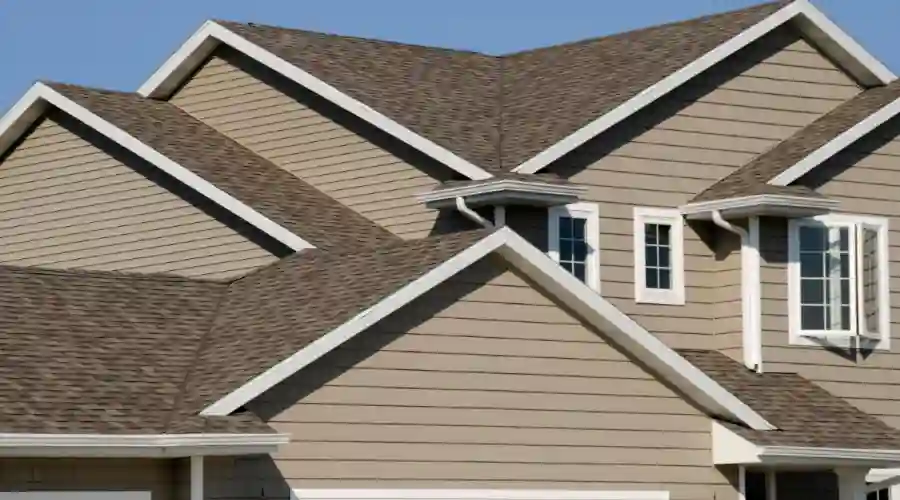Wondering which roof will best protect and complement your dream home? You are not alone if you feel a little lost: about 60% of homeowners confess that dealing with the roof selection process is one of the toughest parts of building construction. It is a decision worth considering carefully. Should you choose the classic Gable roof, known for its extra attic space or the weather-resistant Hip roof that offers unmatched protection?
The roof influences both the appearance and the long-term property value of your home. Regardless of how windy, snowy or calm your climate is, choose one that complements your style and environment. Let’s explore the pros and cons of each option, so you can finally be ready to pick one that matches your home!
What is a Hip Roof?

Hip roofs are usually featured with a sloping surface on four sides. Different from gable roofs, which have two sides with slopes, the edges of a hip roof are angled and meet at the ridge, yielding a more unified and robust structure. It is likened to a pyramid or tent. This roof is ideal for homes located in windy and rainy areas. Since the roof is sloping, it is easy for rain and, in some cases, snow to run off. Thus it prevents the accumulation of snow. Compared to other roofs, this roof offers better protection against weather conditions.
What is a Gable Roof?

In contrast, gable roofs are the most common roof type and they consist of two sides sloped towards a point in the centre, forming a triangle. It is quite simple and familiar in design and gives houses a very traditional and balanced appearance. Gable roofs are also known to provide further attic space and aeration, making them adaptable to any kind of conventional or modern dwelling. It may be simple, but it has been used for years due to its suitability for various weather conditions.
Pros and Cons of Hip Roof
Pros:
- Stability:
A hip roof is more solid than a gable roof. Four slopes spread the weight evenly, reducing the risk of collapse due to storm damage.
- Wind Resistance:
If you are in a windy locale, then a hip roof is a great choice. Winds become unable to get under the roof and cause damage because of its sloping sides.
- Extra Space:
The design of a hip roof can create more usable attic space, which might be perfect for additional storage or even turning it into an extra room.
- Durability:
A hip roof would be able to endure the test of time and weather conditions better than many other types of roofs due to its firm construction.
Cons:
- Cost:
A hip roof is typically quite expensive due to the complexity of the type, so you need more materials and time for construction.
- Limited Space for Expansion:
Although a hip roof adds space to your attic, it will never provide that level of space as is possible with a gable roof. It also restricts what can be done with the upper floors.
Pros and Cons of Gable Roof
Pros:
- Affordable:
Due to the simple design, it is cheaper to build gable roofs. The material requirement is lower and construction takes less time.
- Extra Attic Space:
The extra space that a gable roof affords is probably the biggest advantage. The open design provides an attic space with higher ceilings, thus making the area more practical for storage or an extra living space.
- Great Ventilation:
The triangle shape allows air to flow more freely through the attic. So it prevents heat buildup and helps keep your home cool.
- Aesthetic Appeal:
A gable roof has many admirers for its classical symmetry. It can blend superbly with various home styles.
Cons:
- Vulnerable to Wind:
The wind-propelled gable roof might not be your best choice if you reside in a high-wind area. The roof’s slant can catch the wind and strain the roof, making it further prone to damage.
- More Maintenance:
Over time, gable roofs may need maintenance. Due to the two long, sloping sides, they will trap debris, snow and rain, resulting in leaks or other structural problems.
Choose the Right Roof for Your Climate
The primary determinant of whether to choose a hip roof or a gable roof is the region where you live. You will always have different challenges based on the climate of your area and because of that, sometimes a roof will perform more optimally than the other due to the weather conditions you face.
- Windy Areas:
Are you located in a region that experiences frequent hurricanes? It is then advisable to go for a hip roof. Its sloped design reduces wind resistance and adds stability during stormy periods.
- Snowy Areas:
For homes located in snow-heavy regions, enhanced performance will be expected from a hip roof than a gable roof. Snow slides off with the slope of a hip-roof and it is not prone to accumulating snow damage as it does not collect snow.
- Dry, Calm Climates:
A gable roof may work perfectly well in regions with mild weather, where strong winds and heavy snow aren’t concerns. It is affordable, functional and adds extra space to your home.
- Hot Climates:
If one is in a warm climate, ventilation of the gable roof might do the trick in cooling that attic below. However, if there are chances for stormy winds, then a hip roof may also be a better choice regardless of its warmer temperatures.
Conclusion
So, which roof is the perfect fit for your home: a wind-resistant hip roof or a classic gable roof? The choice is yours! Think about your climate, your style and what you really need for your house. Do you want a roof that stands strong against harsh weather or provides better interior space and gives a more traditional appearance? Whatever it is, you can ensure it suits your lifestyle and your dream home well. Take your time, weigh your options and make a decision that will protect and elevate your home for years. So, what’s your pick? Let your roof reflect your style and future!

